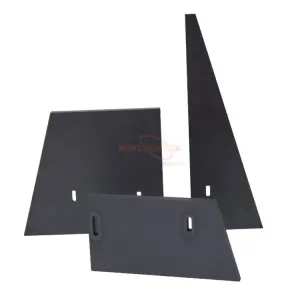
A non-metallic compound composed of silicon and nitrogen, silicon nitride (Si3N4) is also an advanced ceramic material with the most adaptable mix of mechanical, thermal, and electrical properties. Additionally, compared to most other ceramics, it is a high-performance ceramic with a low thermal expansion coefficient that offers excellent thermal shock resistance.
Features
Due to its low thermal expansion coefficient, the material has a very high thermal shock resistance and good fracture toughness. Si3N4 workpieces are resistant to impacts and shocks. These workpieces can tolerate operation temperatures of up to 1400 °C and are resistant to chemicals, corrosive effects, and specific molten metals like aluminum, as well as acids and alkaline solutions. Another feature is its low density. It has a low density of 3.2 to 3.3 g/cm3, which is nearly as light as aluminum (2.7 g/cm3), and it has a max bending strength of ≥900 MPa.
In addition, Si3N4 is characterized by high resistance to wear and exceeds the high-temperature properties of most metals, such as high-temperature strength and creep resistance. It offers a superior mix of creep and oxidation resistance and outperforms the high-temperature capabilities of the majority of metals. Thanks to its low heat conductivity and strong wear resistance, it can withstand the harshest circumstances in the most demanding industrial applications. Moreover, silicon nitride is a great option when high-temperature and high-load capabilities are required.
Properties
● High fracture toughness
● Good flexural strength
● Extremely low density
● Incredible strong thermal shock resistance
● High working temperature in oxidizing atmospheres
Production Method
The five various processes used to make silicon nitride—lead to slightly different working materials and applications.
SRBSN (reaction-bonded silicon nitride)
GPSN (gas pressure sintered silicon nitride)
HPSN (hot-pressed silicon nitride)
HIP-SN (hot isostatically pressed silicon nitride)
RBSN (reaction-bonded silicon nitride)
Among these five, GPSN is the most often used method of production.
Application Examples
Balls and Rolling Elements for Light
Due to their great fracture toughness and good tribological properties, silicon nitride ceramics are ideally suited for use as balls and rolling elements for light, extremely precise bearings, heavy-duty ceramic forming tools, and highly stressed automotive components. Additionally, welding techniques make use of materials' strong thermal shock resistance and high-temperature resistance.
High-Temperature Applications
Besides, it has long been employed in high-temperature applications. The fact that it is one of the few monolithic ceramic materials that can withstand the extreme thermal shock and temperature gradients produced by hydrogen/oxygen rocket engines.
Automotive Industry
Currently, the silicon nitride material is used primarily in the automotive industry in applications for engine parts and engine accessory units, such as turbochargers for lower inertia and reduced engine lag and emissions, glow plugs for quicker startup, exhaust gas control valves for increased acceleration, and rocker arm pads for gas engines to lower wear.
Electronics Industry
Due to its distinct electrical properties, in microelectronics applications, silicon nitride is increasingly used as an insulator and chemical barrier in the production of integrated circuits for the safe packaging of devices. Silicon nitride is utilized as a passivation layer with a high diffusion barrier against sodium ions and water, which are two key causes of corrosion and instability in microelectronics. In capacitors for analog devices, the substance is also utilized as an electrical insulator between polysilicon layers.
Conclusion
Silicon nitride ceramics are utility materials. Each type of this ceramic has unique features that make it useful in a variety of sectors. Understanding the many varieties of silicon nitride ceramics makes it easy to select the best one for a given application.


























